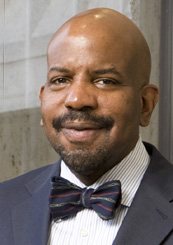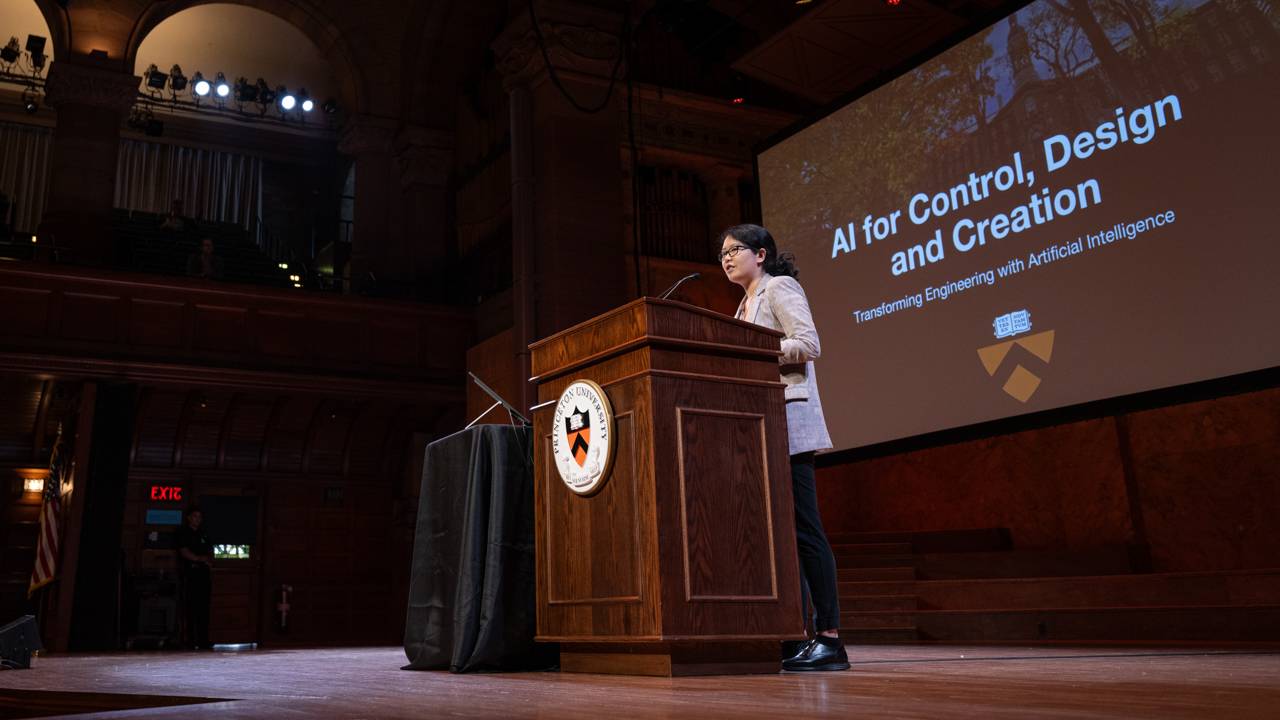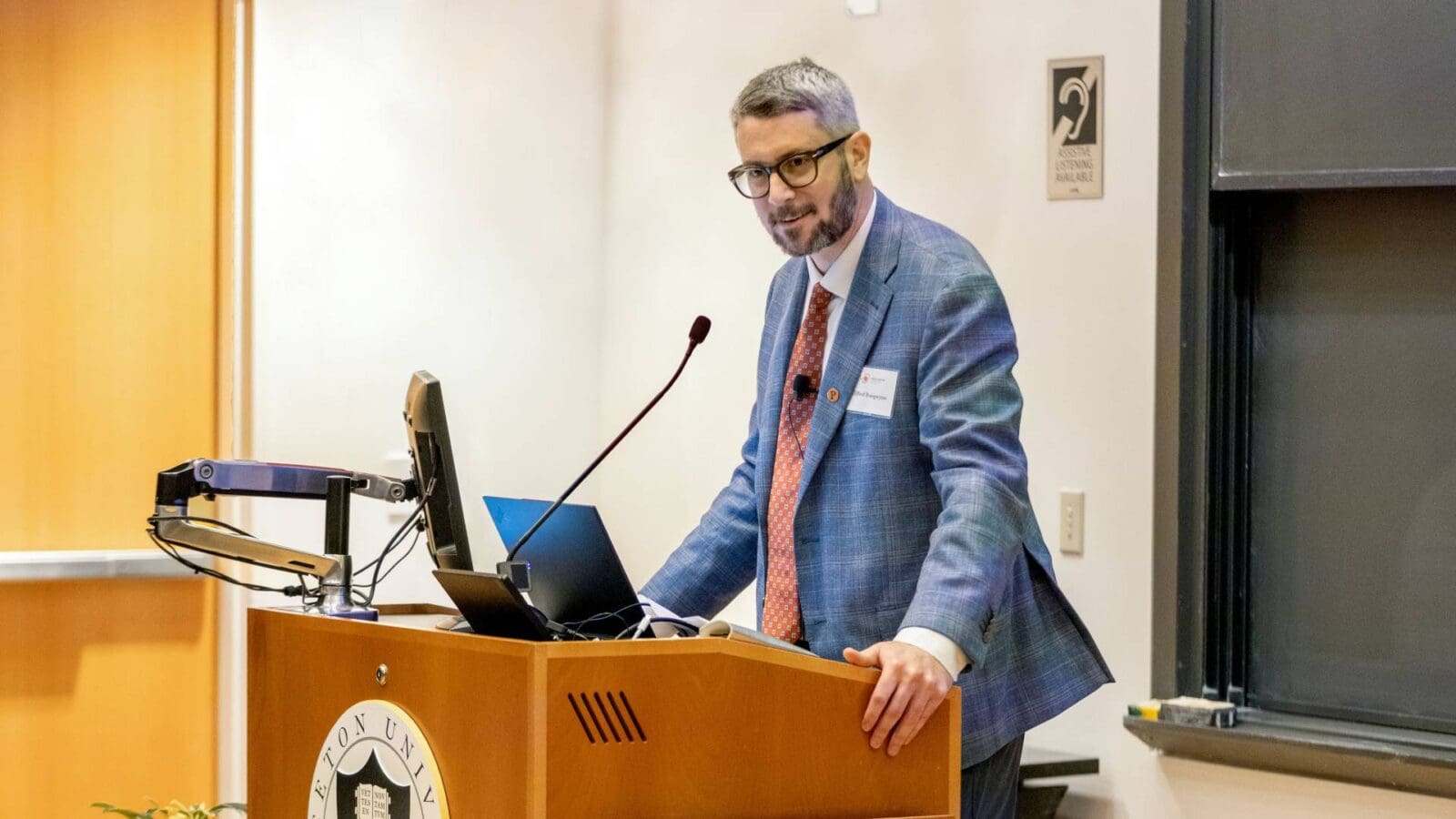The future of health: An alumni Q&A
By
on
EQuad News magazine recently spoke with four alumni who are visionaries in the field of health care: Patrick Beattie, Laura Forese, Cato Laurencin and Christopher Loose.
Weigh in with your own opinion on our Facebook page or email us at eqn@princeton.edu.
What do you see as the major challenges for global health?
 Laura Forese, chief operating officer and chief medical officer of New York-Presbyterian Hospital/Weill Cornell Medical Center: An enormous global challenge in health care is the spread of infectious disease. It’s imperative that we think about this issue in the context of the local environment. For example, a cholera outbreak in a developing country following a natural disaster will require a vastly different response than a disease that spreads widely and rapidly because of the nature of airplane travel.
Laura Forese, chief operating officer and chief medical officer of New York-Presbyterian Hospital/Weill Cornell Medical Center: An enormous global challenge in health care is the spread of infectious disease. It’s imperative that we think about this issue in the context of the local environment. For example, a cholera outbreak in a developing country following a natural disaster will require a vastly different response than a disease that spreads widely and rapidly because of the nature of airplane travel.
 Patrick Beattie, head of global health operations for Diagnostics For All, a non-profit that creates low-cost, easy-to-use point-of-care diagnostic devices for the developing world: Infectious disease is a major problem and causes significant morbidity and mortality, but chronic disease issues are rapidly growing, and in some areas, have already overtaken infectious disease as the number one health problem. Chronic health issues typically require monitoring and extended treatments as opposed to one-time interventions. How to provide this level of health care to large populations with low incomes is a very big challenge.
Patrick Beattie, head of global health operations for Diagnostics For All, a non-profit that creates low-cost, easy-to-use point-of-care diagnostic devices for the developing world: Infectious disease is a major problem and causes significant morbidity and mortality, but chronic disease issues are rapidly growing, and in some areas, have already overtaken infectious disease as the number one health problem. Chronic health issues typically require monitoring and extended treatments as opposed to one-time interventions. How to provide this level of health care to large populations with low incomes is a very big challenge.
 Christopher Loose, chief technology officer and co-founder of Semprus Biosciences, a venture-funded biomedical company: A major challenge will be to support innovation in an increasingly cost-constrained environment. New therapies to improve health continue to require substantial investment. The appropriate incentives are necessary to drive these breakthroughs to the patients who need them.
Christopher Loose, chief technology officer and co-founder of Semprus Biosciences, a venture-funded biomedical company: A major challenge will be to support innovation in an increasingly cost-constrained environment. New therapies to improve health continue to require substantial investment. The appropriate incentives are necessary to drive these breakthroughs to the patients who need them.
 Cato Laurencin ’80, Albert and Wilda Van Dusen Distinguished Professor of Orthopaedic Surgery at the University of Connecticut and member of the National Academy of Engineering: The elimination of health disparities in the United States, especially those based upon race and ethnicity, is a major challenge. I applaud the fact that the National Institutes of Health has launched a new initiative dedicated to minority health and health disparities. By the year 2050 (maybe sooner) ethnic minorities in American will be in the majority. The issues contributing to disparities in health care — environment, racism, genetics — need to be studied; solutions need to be proposed and tested.
Cato Laurencin ’80, Albert and Wilda Van Dusen Distinguished Professor of Orthopaedic Surgery at the University of Connecticut and member of the National Academy of Engineering: The elimination of health disparities in the United States, especially those based upon race and ethnicity, is a major challenge. I applaud the fact that the National Institutes of Health has launched a new initiative dedicated to minority health and health disparities. By the year 2050 (maybe sooner) ethnic minorities in American will be in the majority. The issues contributing to disparities in health care — environment, racism, genetics — need to be studied; solutions need to be proposed and tested.
Where are the biggest opportunities for innovation?


Beattie: Few areas in global health are so close to being solved that they wouldn’t benefit from innovation. But health care delivery systems are primed for innovation. As chronic disease becomes a larger burden and the relative importance of broader health care services and monitoring rises, it will quickly become apparent that developed-world delivery models will not work. Creating a system that will work is going to require innovation in delivery methods, available tools (to enable testing and monitoring at lower price-points), and payment methods. The challenges are daunting but the opportunities are exciting.
Laurencin: Our main barrier to innovation is ourselves. We must rededicate ourselves to the education and development of our young people, as we are rapidly falling behind the rest of the world in science engineering and math. “No child left behind” must become, “Every child up front.” We must raise standards, expectations and resources for the development of our young people.
Forese: We need to drive technology to both replace practitioners and to help people monitor their own health. We are never going to have enough doctors and nurses to treat everyone; technology can augment manpower tremendously.
One of the greatest opportunities around health innovation is that we can do so much more in prevention. If you can prevent something, obviously you don’t have to treat it. In the United States that looks very different than it would for developing parts of Africa, where clean water and clean air and improvements like that are most important.
Loose: The most urgently needed innovations are those that can improve patient outcomes while removing costs from the healthcare system.
How will health care in the United States change in the next ten years?
Laurencin: I think President Obama’s healthcare legislation will have a tremendously positive impact on medicine. Quality and safety will become a mainstay of treatment, and organizations and doctors will be held accountable and rewarded for such efforts. We are entering an exciting new era in healthcare.
Loose: The shift from “fee for service” to “pay for performance” will put an increasing focus on approaches and technology that can improve the efficiency with which quality health care is delivered. This change will require improved technology to reduce patient complications, enable more effective home care, and reduce re-admittance. Advances in healthcare information technology have the potential to further improvement safety, health care efficiency, and patient outcomes.
Forese: U.S. health care is going to change significantly. We will see much more emphasis on prevention and wellness. This will stem from people’s awareness about how important prevention is but also will come about because the sheer number of dollars we spend on health care is not sustainable. We have very high demands for our personal health in the United States. We expect that everyone who needs it should be able to get a heart transplant.
A big one that we have to get our arms around – no pun intended – is obesity. Obesity is like smoking was 10 or 20 years ago. We no longer tolerate certain attitudes regarding smoking that used to be commonplace. Similarly our attitudes about junk food and other obesity drivers will change drastically. Obesity is responsible for a significant number of our health care dollars in a way that we cannot sustain in the next 10 years.
Beattie: The health care system in the U.S. has many entrenched interests and is generally very conservative, which means that fundamental shifts are difficult to achieve. However, the current crisis around health care costs coupled with the popularity of cell phones that are in reality computers capable of acting as platforms for innovation will force us to reevaluate our current system, especially the relative merits of centralized versus decentralized systems.






